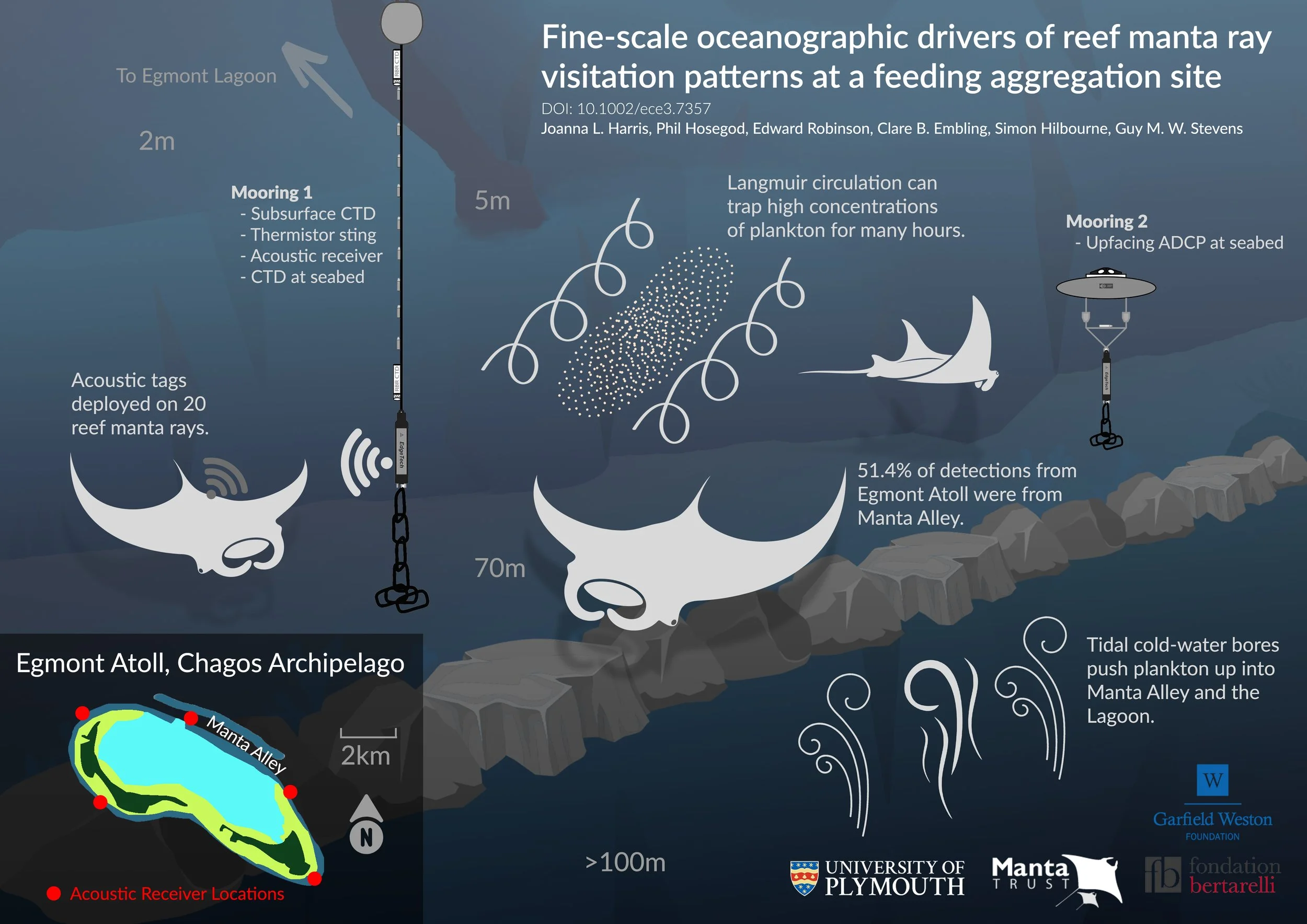Fine scale oceanographic drivers of reef manta ray (Mobula alfredi) visitation patterns at a feeding aggregation site
March 2021
Joanna L. Harris, Phil Hosegood, Edward Robinson, Clare B. Embling, Simon Hilbourne & Guy M. W. Stevens
Keywords: Acoustic telemetry • Boosted Regression Trees • Cold-water Bores • Foraging Ecology • Internal Waves • Langmuir Circulation
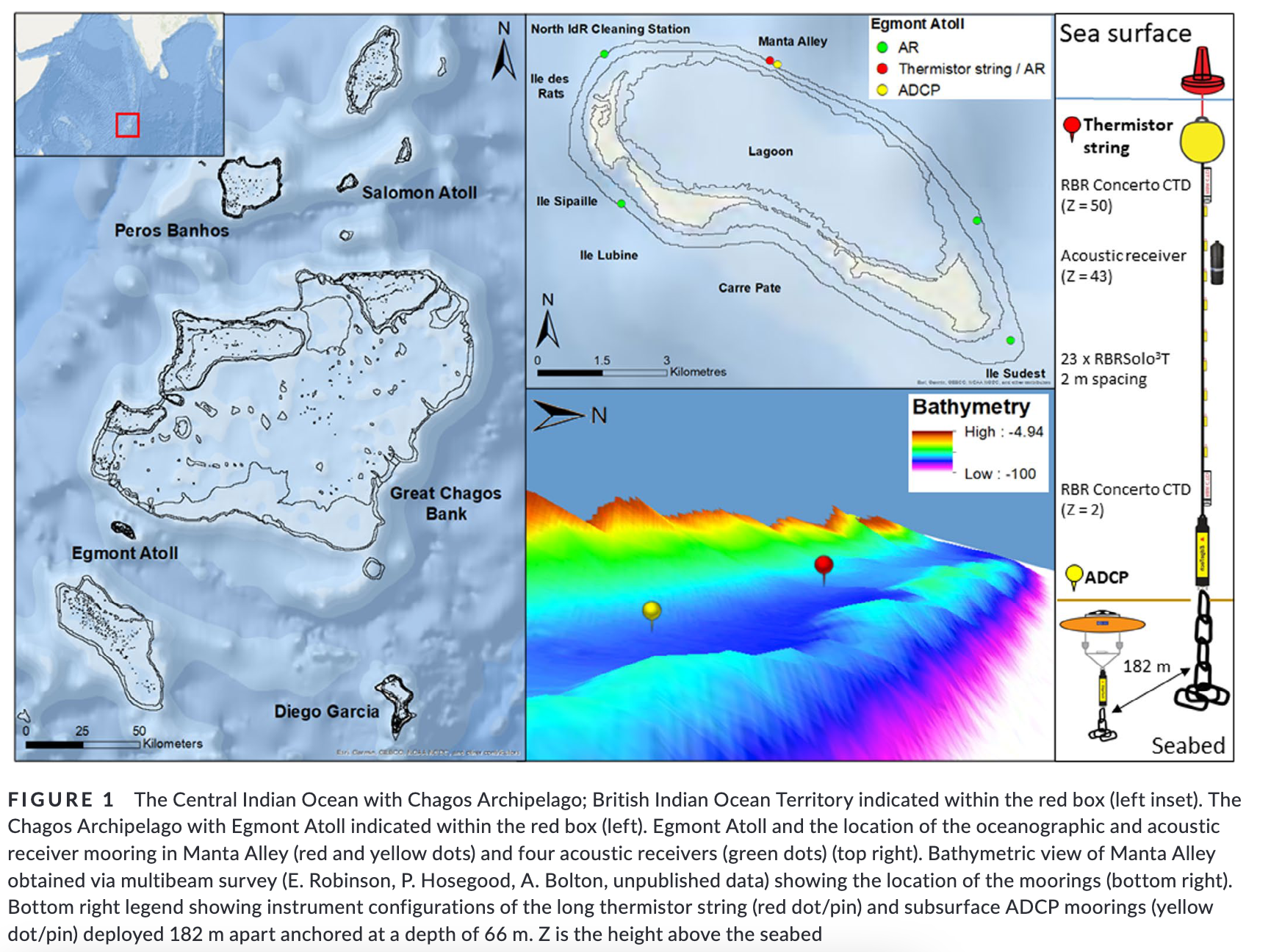
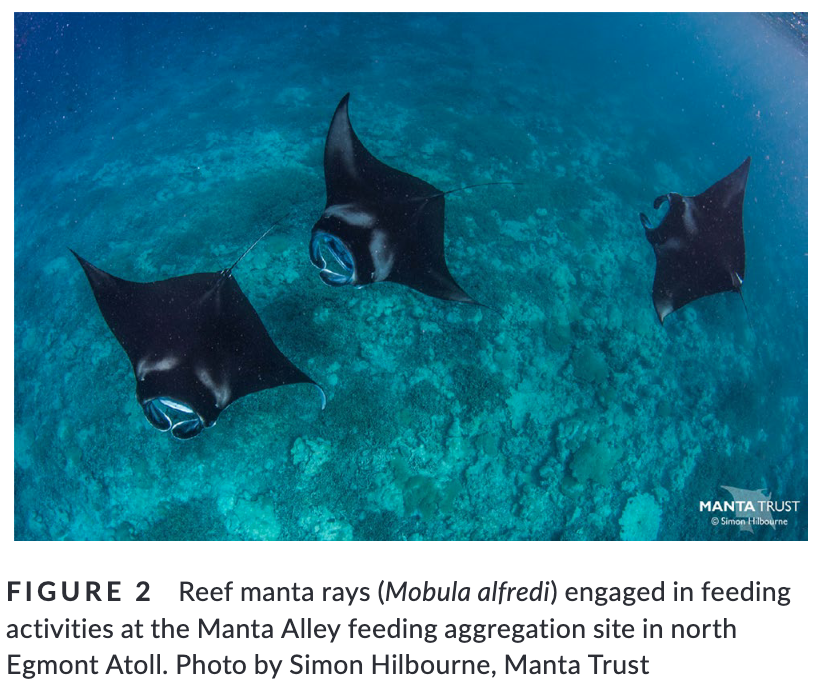

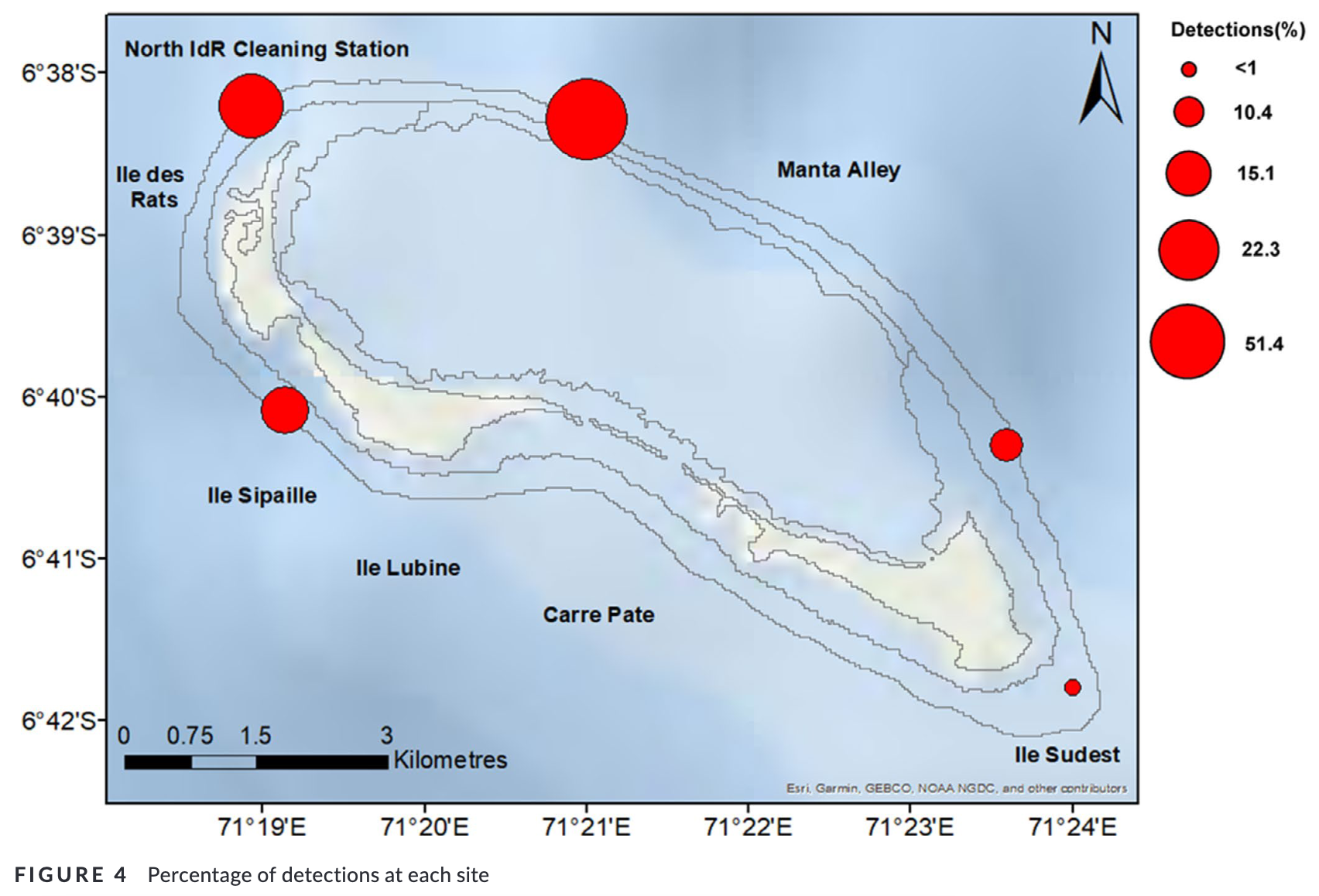
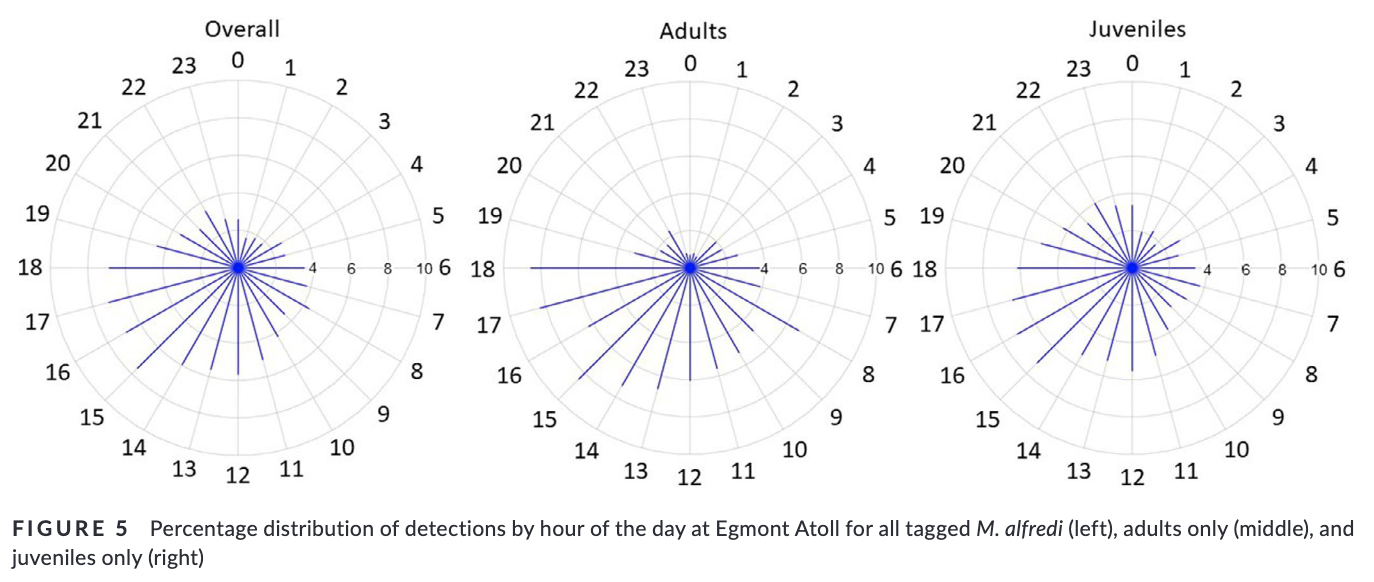
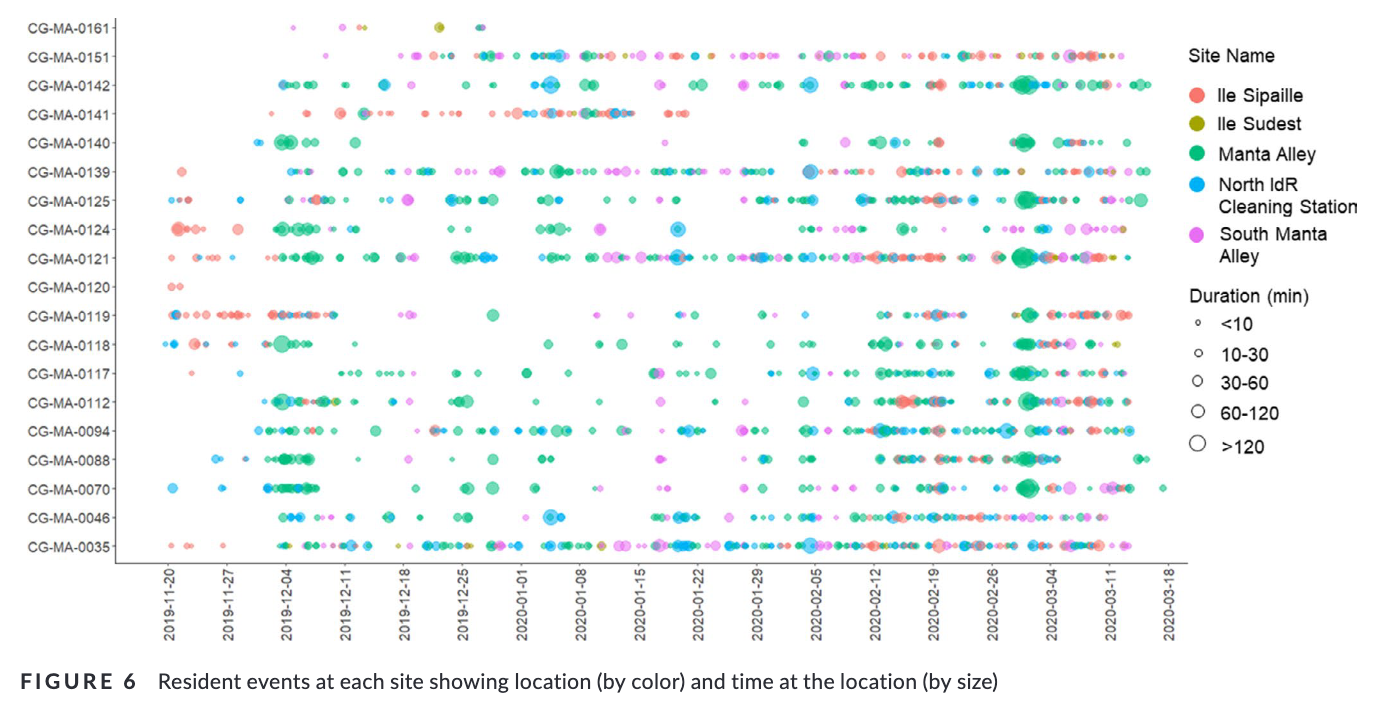
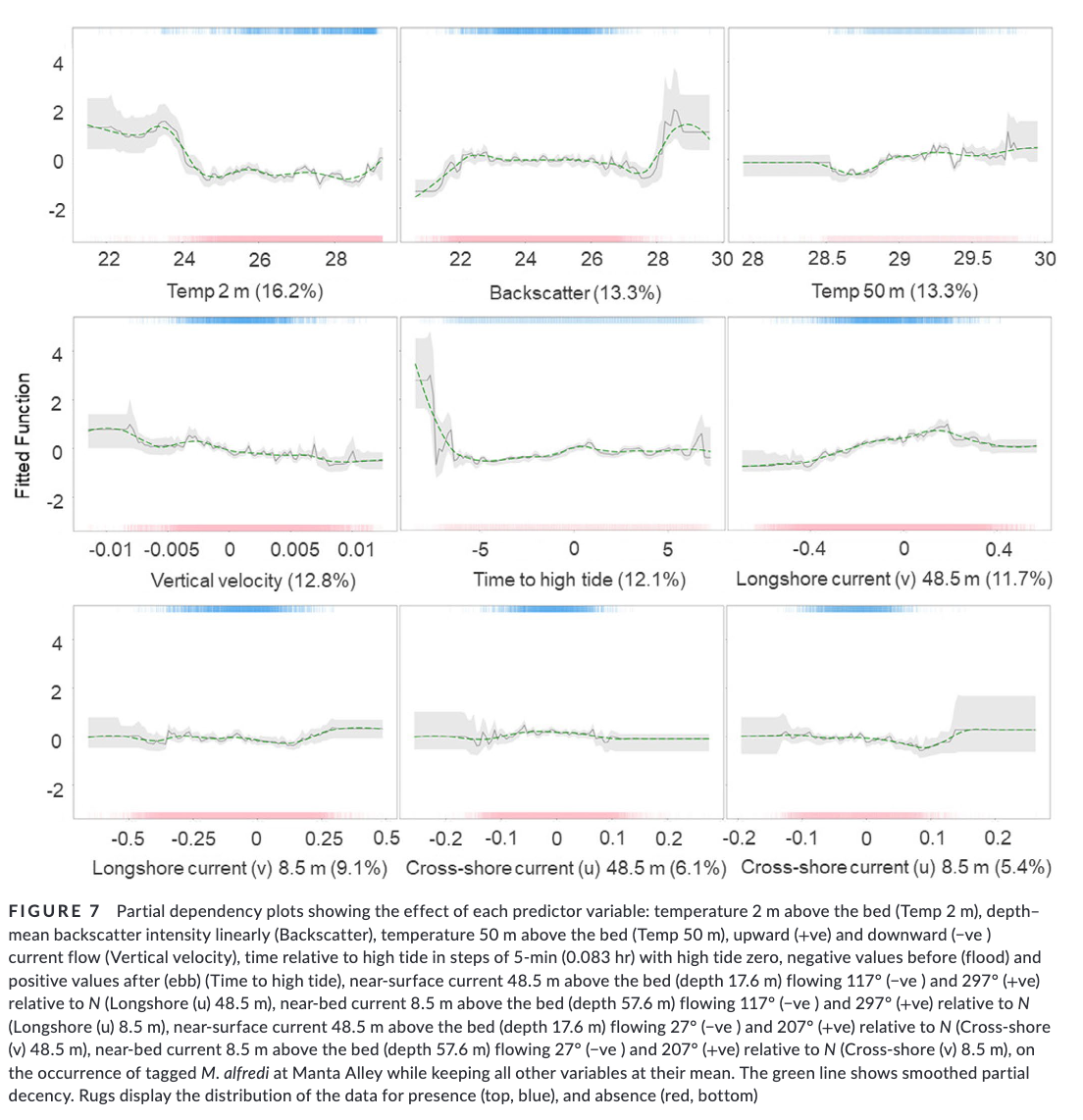
Summary: Reef manta rays are in decline and vulnerable to exploitation and disturbance at aggregation sites. This study used advanced oceanographic technologies in the Chagos Archipelago and found that oceanographic drivers influence the visitation patterns of manta rays at feeding aggregation sites. This includes the intrusion of cold-water bores, warmer near-surface temperature, near-surface offshore currents, and high levels of backscatter. The study sheds light on the dynamic synthesis of fine-scale oceanographic processes that influence the foraging ecology of manta rays at Egmont Atoll and elsewhere in their range.
Abstract
“Globally, reef manta rays (Mobula alfredi) are in decline and are particularly vulnerable to exploitation and disturbance at aggregation sites. Here, passive acoustic telemetry and a suite of advanced oceanographic technologies were used for the first time to investigate the fine-scale (5-min) influence of oceanographic drivers on the visitation patterns of 19 tagged M. alfredi to a feeding aggregation site at Egmont Atoll in the Chagos Archipelago. Boosted regression trees indicate that tag detection probability increased with the intrusion of cold-water bores propagating up the atoll slope through the narrow lagoon inlet during flood tide, potentially transporting zooplankton from the thermocline. Tag detection probability also increased with warmer near-surface temperature close to low tide, with near-surface currents flowing offshore, and with high levels of backscatter (a proxy of zooplankton biomass). These combinations of processes support the proposition that zooplankton carried from the thermocline into the lagoon during the flood may be pumped back out through the narrow inlet during an ebb tide. These conditions provide temporally limited feeding opportunities for M. alfredi, which are tied on the tides. Results also provide some evidence of the presence of Langmuir Circulation, which transports and concentrates zooplankton, and may partly explain why M. alfredi occasionally remained at the feeding location for longer than that two hours. Identification of these correlations provides unique insight into the dynamic synthesis of fine-scale oceanographic processes which are likely to influence the foraging ecology of M. alfredi at Egmont Atoll, and elsewhere throughout their range.”
Infographics
Author Affiliations
The Manta Trust
University of Plymouth
Funded by
Garfield Weston Foundation
Bertarelli Foundation

